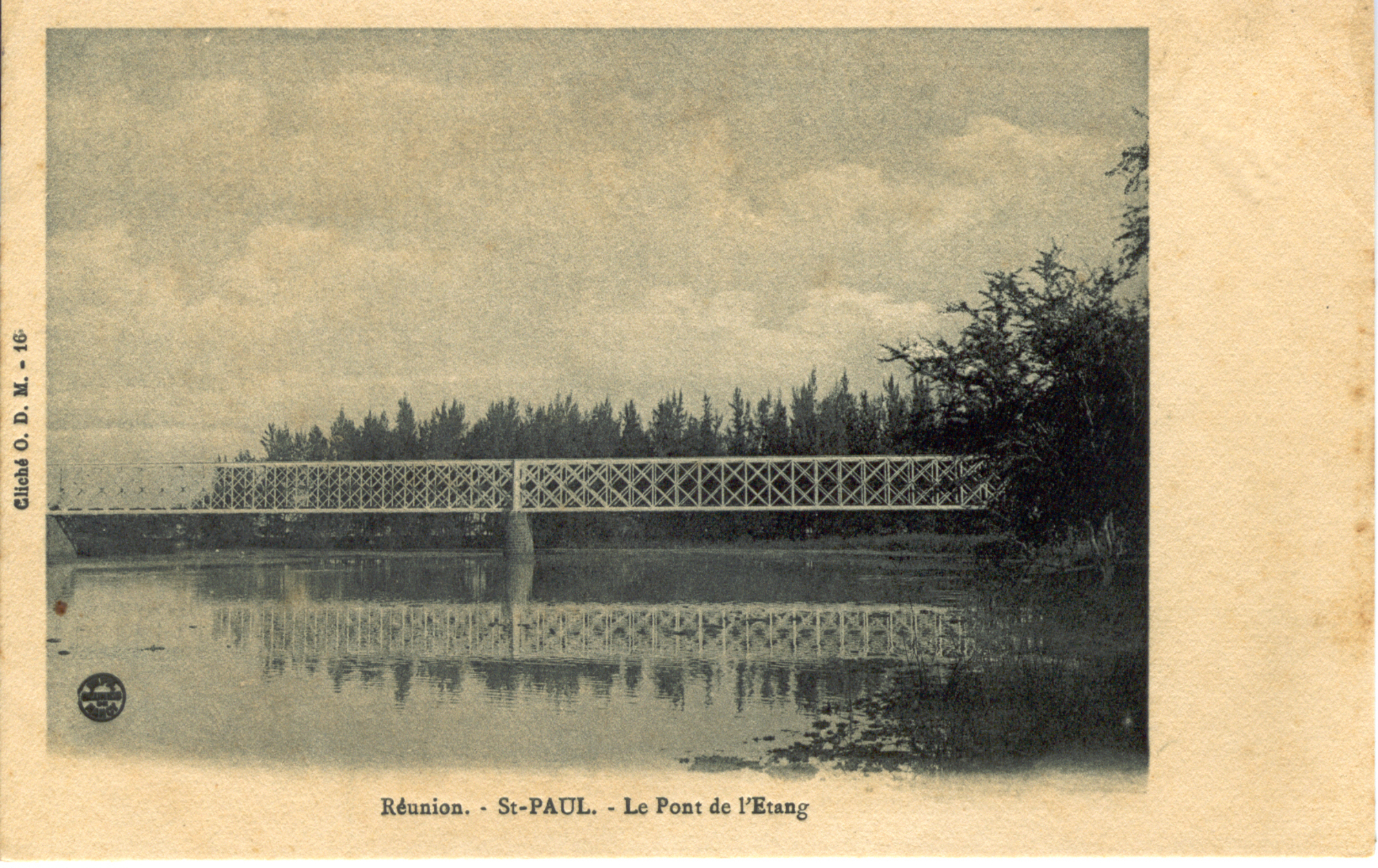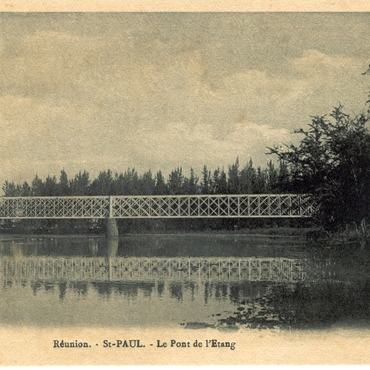
- Home
- Archaeology on Reunion Island
- Sites
- Saint-Paul
- L’Étang bridge
- Cilaos
- La Possession
- Saint-André
- Saint-Benoît
- Saint-Denis
- Saint-Joseph
- Saint-Leu
- Saint-Louis
-
Saint-Paul
- Bassin Vital
- Batterie “De Droite"
- Batterie “De l’Embouchure"
- Cap Champagne
- Chemin de Bernica
- Marin cemetery
- Colline du Théâtre
- Domaine de Villèle
- Eastern entrance, Section 3
- Glacières du Maïdo
- Plaine-aux-sables
- Plateau Picard
- L’Étang bridge
- Poudrière
- Route des premiers Français
- Bruniquel factory, indentured workers’ camp and hospital
- Usine de Grand Fond
- Saint-Pierre
- Saint-Philippe
- Sainte-Rose
- Sainte-Suzanne
- Salazie
In 2016, some parts of L'Étang Saint-Paul railway bridge, built between 1879 and 1880, were identified and its position determined during field walking surveys. Discovered on a Réunion railway exploratory mission, these remains are among the oldest railway works still visible today.
L'étang Saint-Paul railway bridge: a history
A bridge was built at Km 64 + 621 metres across L'Étang de Saint-Paul lagoon. The bridge, close to the shore, is next to the Bout de l’Étang to the west of Saint-Paul. This lattice-girder metal bridge, 100 metres long, 3.5 metres wide and 5 metres high, rests on two abutments and a central pier in basalt cut stone; it was built by the Cie du Chemin de fer et du Port de la Réunion (C.P.R.). This regularly maintained bridge is now a footbridge. Nothing remains of the old railway line.
Field walking surveys
Popular with hikers, L'Étang de Saint-Paul has been a 485-hectare national nature reserve since 2008. Walkers and hikers use the former rail bridge, now pedestrianised, to reach the Plaine Chabrier and the Bout de l’Étang.





